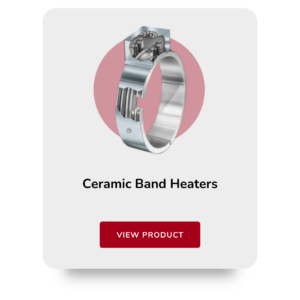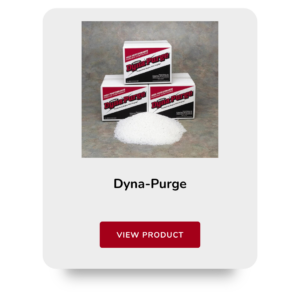Authored by Isabel McCord
Enhancing Extruder Performance: Key Products and Maintenance Tips
Optimizing your plastic extruder’s performance is essential for efficiency and reliability. By using the right components and following a robust maintenance schedule, you can improve your extrusion process while minimizing downtime. Here are the essential products and maintenance practices to consider.
Key Products for Extruder Efficiency
Heater Bands:
- Ceramic Heater Bands: Offering excellent heat transfer and durability, ceramic heater bands ensure uniform and reliable heating in critical extrusion zones. Their robust design also reduces the likelihood of heat loss, promoting energy efficiency.

- Maxiband Heaters: Designed as Heat and Cool, Heat Only, or Cool Only. The channels in the extruded aluminum track are precisely sized to accept a .315-diameter tubular heating element and provide an excellent heat sink for rapid heat transfer and good temperature uniformity.
Sensors:
- Thermocouples: Precise temperature monitoring is essential for maintaining optimal extrusion conditions. Thermocouples deliver accurate, real-time temperature readings, enabling fine control over the heating process.

- Pressure Sensors: These sensors monitor material flow, helping to detect blockages or inconsistencies in material feed. By addressing pressure fluctuations early, you can avoid material waste and equipment strain.
Additional Products:
- Extruder Screws: High-quality screws optimize material flow, improving efficiency and product quality.
- Cooling Systems: Effective cooling systems help regulate the temperature of extruded materials, preventing warping, deformation, or other quality issues caused by overheating.
Best Practices for Maintenance
- Regular Cleaning
Prevent buildup with Dyna-Purge to maintain smooth operation and reduce costly downtime. Dyna-Purge is an effective cleaning agent that clears residue on the first pass, Dyna-Purge minimizes downtime and reduces plastic scraps. Its ready-to-use formula requires no soaking or mixing and works at the machine’s normal temperature and speed, ensuring no hidden costs. Safe for both operators and equipment, it is heat-stable, non-abrasive, and environmentally compliant.
Its ready-to-use formula requires no soaking or mixing and works at the machine’s normal temperature and speed, ensuring no hidden costs. Safe for both operators and equipment, it is heat-stable, non-abrasive, and environmentally compliant. - Temperature Control
Maintaining proper temperature settings is key to producing consistent material quality. Ensure that temperatures are neither too high nor too low to prevent material degradation or production defects. - Lubrication
Following the manufacturer’s lubrication guidelines is essential for reducing friction, wear, and tear on moving parts. Proper lubrication helps extend the lifespan of your extruder. - Routine Inspections
Regularly inspect your extruder for unusual sounds, vibrations, or other warning signs of mechanical issues. Addressing potential problems early prevents costly repairs and production delays. - Proper Shutdown
Adhere to recommended shutdown procedures to protect your extruder and ensure smooth restarts.
Conclusion
Using the right components, such as heater bands, sensors, and Dyna-Purge, paired with regular maintenance, will ensure optimal performance of your extruder. Regular cleaning, lubrication, and inspections help minimize downtime and keep your extrusion process running smoothly.
